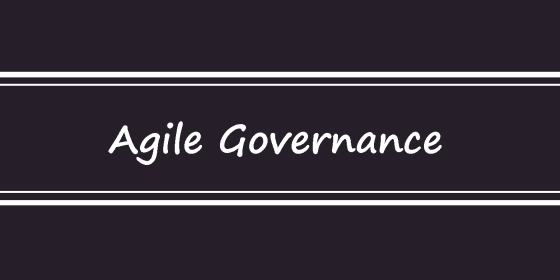Agile Governance

Agile Governance refers to the set of principles, policies, and practices that support and guide Agile initiatives within an organization. It ensures that Agile projects and teams align with the organization’s overall goals, maintain transparency, and adhere to compliance requirements while still embracing Agile values and principles.
Key points about Agile Governance include:
- Balancing Flexibility and Control: Agile Governance seeks to strike a balance between allowing teams the flexibility to self-organize and make decisions while maintaining appropriate levels of control, oversight, and compliance.
- Clear Objectives and Alignment: Governance in Agile environments emphasizes clear and well-communicated objectives. It ensures that Agile initiatives are aligned with the strategic goals of the organization.
- Decision-Making Authority: Agile Governance defines decision-making authority and establishes the boundaries within which Agile teams can operate autonomously.
- Risk Management: Agile Governance focuses on identifying and managing risks associated with Agile projects and ensuring that appropriate risk mitigation strategies are in place.
- Performance Measurement and Metrics: Governance frameworks in Agile environments include relevant performance metrics to measure project progress, quality, and value delivery.
- Continuous Improvement: Agile Governance supports a culture of continuous improvement by encouraging feedback, learning, and adaptation based on data-driven insights.
- Compliance and Regulations: Governance ensures that Agile practices comply with legal and regulatory requirements, particularly in industries with strict compliance standards.
- Role of Management and Leadership: Governance clarifies the role of management and leadership in supporting Agile initiatives, including their involvement in decision-making and problem-solving.
- Transparency and Communication: Agile Governance promotes transparency in decision-making processes, enabling stakeholders to understand the progress, challenges, and risks associated with Agile projects.
Agile Governance can be implemented through various mechanisms, depending on the organization’s size, complexity, and industry. Some common practices include:
- Agile Steering Committees: Cross-functional groups that provide guidance and direction for Agile initiatives, ensuring alignment with organizational goals.
- Defined Decision-Making Frameworks: Clearly defining decision-making authority for different aspects of Agile projects, from prioritization to resource allocation.
- Compliance Reviews: Ensuring that Agile projects adhere to legal, regulatory, and security requirements through regular compliance reviews.
- Performance Dashboards: Using data-driven performance metrics and visualizations to track the progress and impact of Agile projects.
- Agile Project Charters: Creating project charters that outline project objectives, scope, stakeholders, and governance principles.
The goal of Agile Governance is not to impose rigid control but to provide the necessary support and structure that enable Agile teams to be effective, collaborative, and customer-focused while delivering value to the organization and its stakeholders.